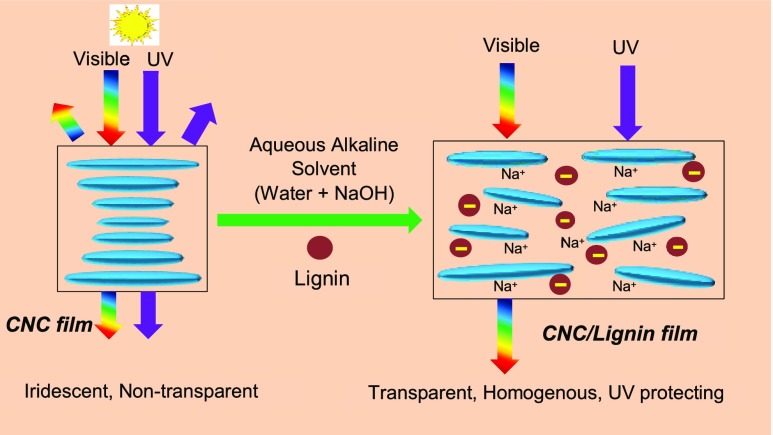- Record: found
- Abstract: found
- Article: not found
Transparent and Homogenous Cellulose Nanocrystal/Lignin UV-Protection Films

Read this article at
Abstract

In the context of valorization of lignin produced from the pulp and paper industries, biodegradable UV-protection films were prepared using lignin and cellulose nanocrystals (CNCs). Initially, CNC films were optimized for improving their transparency by studying the effect of various sodium hydroxide (NaOH) concentrations. Maximum (%) transmittance of CNC film was obtained for NaOH addition between 3 and 4 wt %. The optimized CNC suspensions were used for incorporating alkaline lignin (AL) and softwood kraft lignin (SKL) in various concentrations (1–10 wt %). Morphological characterization showed homogeneity of the lignin distribution in CNC/lignin films. Complete UV blocking was achieved at 10 wt % lignin (AL or SKL) in CNC films. Cross-polarized optical microscopy and scanning electron microscopic images of films showed some degrees of global alignment of CNC rods upon addition of NaOH, which remained unaffected by lignin addition. Lignin modification through acetylation reduced the lignin color and improved visible light transmission of films without significantly affecting the UV-absorption properties. Presence of lignin also enhanced the thermal and contact angle stability of the films. This work shows for the first time that CNC aqueous suspensions with and without containing lignin could be tuned through the addition of NaOH to produce transparent and homogenous films, providing a simple and green approach in engineering CNC/lignin UV-protection films.
Related collections
Most cited references59
- Record: found
- Abstract: found
- Article: not found
Effect of sulfate groups from sulfuric acid hydrolysis on the thermal degradation behavior of bacterial cellulose.
- Record: found
- Abstract: not found
- Article: not found
Cellulose nanocrystal-based materials: from liquid crystal self-assembly and glass formation to multifunctional thin films
- Record: found
- Abstract: not found
- Article: not found
